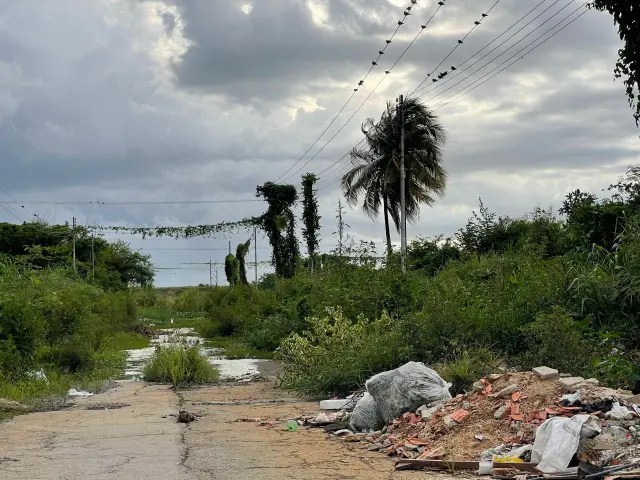
Lake Los Tacariguas, also known as Lake Valencia, has been a silent witness to countless tragedies and challenges faced by the inhabitants of its adjacent areas as this majestic body of water that covers a large part of Aragua State has become the main “ enemy” of various communities in the Girardot and Francisco Linares Alcántara municipalities who are affected by the constant flooding.
lapatilla.1eye.us correspondent
Neighborhoods of Girardot such as La Punta, Mata Redonda, Casanova Godoy, La Esmeralda, Brisas del Lago, as well as the populous Paraparal sector of the Linares Alcántara municipality, have been hit hard – year after year – by flooding and the periodic overflow of the lake.
Families in these areas live in a constant state of alert, fearing that their homes will be flooded again every time it rains, while the authorities continue with only promises to offer effective solutions to this problem.
To learn first-hand about the vulnerable situation of many locals, we spoke with Hivis Suárez, who is a social leader of the Pedro José Ovalles parish and has lived near the lake for 45 years.
Although for many the situation of these homes is a chronic “death foretold” because nature is recovering its spaces, Suárez assures that it is not only about that, but also about a lack of education and adequate public policies.
“If there was less populism, many problems could be avoided. If there were true public policies for the different productive sectors, to contribute, such as purification plants, pumping systems, ecotourism, agricultural sector, perfectly meshed systems that contemplate the collection, classification, reuse and transformation of solid waste, as well as an efficient collection system, thereby preventing citizens from using it as a waste disposal site,” said the social leader.
Likewise, the neighbor mentioned that a dredging plan and regular river flow maintenance crews are part of the policies that must be kept throughout the year in the lake and in adjacent communities that share a common responsibility.
INSUFFICIENT COMPENSATIONS AND HALF SOLUTIONS

This problem, which can reach its final point with the definitive eviction from their homes, has an economic background and half-baked “solutions” on the part of the authorities who cannot envision an end to this drama.
“Initially, the economic impossibility and the lack of seriousness on the part of government entities in creating housing replacement policies at risk have prevented families from leaving these areas,” Hivis explained.
Likewise, she noted that although some families have been compensated or relocated, it has proven to be insufficient. “They have been sent to places arranged by the government where their temporary infrastructure or definitive housing solutions are not yet finished. Instead of receiving decent housing, their problems only change scenery,” said one who has been a front-row spectator.
Regarding the actions of the authorities during rainy periods, such as the use of bilge pumps, Suárez reiterated that the lack of planning leaves communities in the same vulnerable situation.
“Those bilge pumps run on diesel and the lack of it does not allow them to do the job. There is no supervision, responsibility, or social solidarity to effectively solve this problem derived from bad urban planning policies, if so, these problems would not arise or at least would be less serious,” she commented.
A FORGOTTEN CEMETERY

In relation to the floating bodies that were found in the lake a few years ago, Suárez commented that it was a private cemetery that was built on the road to Palo Negro, Libertador municipality, apparently without considering that at some point the flooding of the rivers could affect their permanence and put collective health at risk.
A CRY FOR HELP
The years go by and with them the number of refugees continues to increase. Such is the case of the inhabitants of the Brisas del Lago sector, who for more than 10 years left their homes that were declared “uninhabitable” by the authorities and to date remain in some “temporary” homes.
Segundo Ulacio stated that some 35 families currently live in the “Prince of Peace” Christian church as refugees, while they eagerly await the delivery of their new decent housing that was promised by government spokespeople.
“Years ago the authorities arrived, they evicted us from our homes because they were uninhabitable and were threatening our lives, but they forgot us and never gave us a residence,” the citizen recalled.
Faced with these harsh realities, the voices of Ulacio and Suárez represent all those affected, including those who decided to emigrate in search of a quality of life and those who lost their lives in the hope that the award of a home would become a reality.
That is why they urgently call on the authorities to be aware and be part of the solution. “We need trained personnel, specialized urban planning, and timely preparation of social organizations and leadership. It is also essential to receive a budget that addresses these situations, and greater coordination between government entities and social actors,” said Hivis Suárez, who is one of the many victims who live every day on the edge of Lake Valencia, waiting for a solution that never seems to come.

